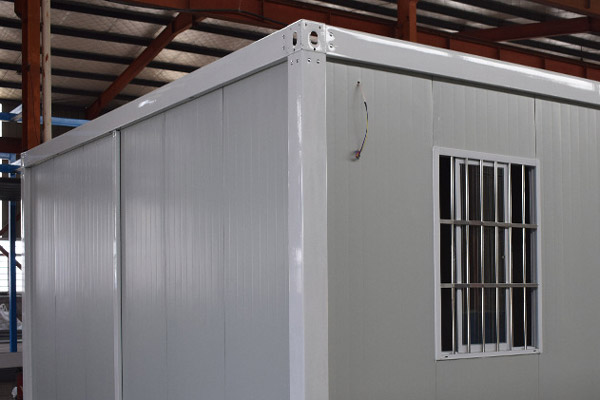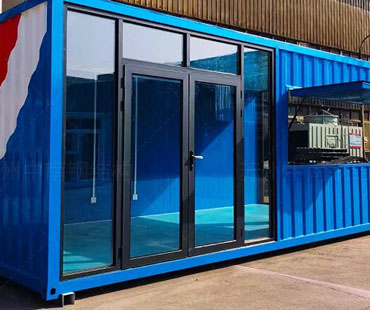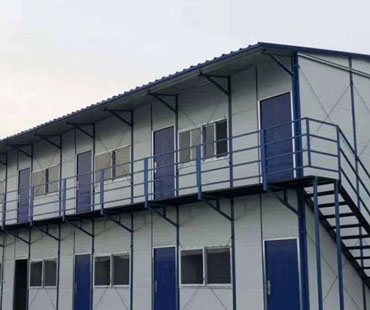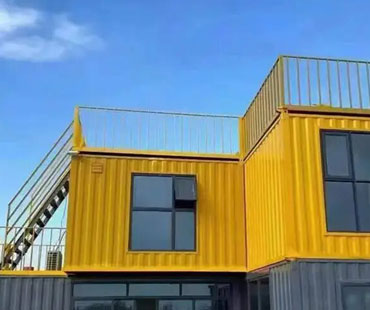In an era defined by globalization and rapid urbanization, containers have emerged as one of the most versatile innovations in modern logistics. Originally designed solely for the purpose of transporting goods efficiently across oceans and land, containers have evolved into multifunctional assets that serve a wide range of applications beyond freight transport.
1.Containers in Construction and Architecture
One of the most striking transformations of containers has been their repurposing in the construction industry. Shipping containers are increasingly being used as building blocks for residential homes, commercial spaces, and even public facilities.
-Affordable Housing: In response to housing shortages, particularly in urban areas, architects and builders are utilizing containers to create affordable housing solutions. These modular structures can be rapidly assembled and customized, providing a quick and cost-effective alternative to traditional construction methods.
-Creative Commercial Spaces: Restaurants, cafes, and pop-up shops are turning to containers for their unique aesthetic and functionality. The industrial look of containers appeals to modern consumers, while their mobility allows businesses to set up shop in various locations without the permanence of traditional buildings.
2.Containers in Agriculture
Containers have found an innovative role in the agricultural sector, particularly in urban farming and sustainable practices. Their modular nature allows for the creation of efficient, space-saving farming solutions.
-Vertical Farming: Shipping containers can be transformed into vertical farms where crops are grown using hydroponic or aquaponic systems. This method allows for year-round production in urban areas, reducing the need for transportation and minimizing the carbon footprint associated with food distribution.
-Mobile Greenhouses: Containers can also serve as mobile greenhouses, providing farmers with the flexibility to grow crops in different locations. This adaptability is especially valuable in regions with varying climates or where land access is limited.

3.Containers in Education and Community Services
The versatility of containers extends into the realm of education and community services, where they are increasingly used to create innovative learning environments.
-Classrooms on the Move: In areas where educational infrastructure is lacking, containers can be converted into temporary classrooms or libraries. This approach provides students with access to education in a flexible and mobile format, allowing for adaptability in response to changing needs.
-Community Centers: Containers are being used to establish community centers offering various services, including workshops, training sessions, and recreational activities. Their cost-effectiveness and ease of setup make them ideal solutions for underserved communities.
4.Containers in the Arts and Culture
Artists and cultural institutions have embraced containers as mediums for creative expression and innovative installations.
-Art Installations: Shipping containers have been transformed into unique art installations and galleries. Their raw, industrial appearance provides a striking backdrop for exhibitions, while the containers themselves can be rearranged and repurposed to create dynamic spaces.
-Cultural Events: Containers are increasingly used at festivals and cultural events as spaces for performances, exhibitions, and interactive experiences. Their mobility allows event organizers to create immersive environments that engage audiences in novel ways.
5.Containers in Disaster Relief and Humanitarian Efforts
In times of crisis, containers can play a crucial role in disaster relief and humanitarian efforts. Their durability and transportability make them ideal for providing immediate assistance in emergency situations.
-Temporary Shelters: Containers can be converted into temporary shelters for displaced individuals during natural disasters or conflicts. Their robust structure offers protection from the elements while ensuring that essential services can be provided.
-Mobile Clinics: Containers can also serve as mobile medical clinics, bringing healthcare to areas in need. Equipped with medical supplies and personnel, these clinics can quickly respond to health crises, providing vital services where they are most needed.
6.The Future of Containers: Embracing Sustainability
As environmental concerns continue to grow, the sustainability of containers is becoming increasingly important. Their reuse and repurposing contribute to waste reduction and promote a circular economy.
-Recycling and Upcycling: The practice of transforming used containers into new products not only reduces waste but also minimizes the demand for new resources. This aligns with global sustainability goals and promotes responsible consumption.
-Eco-Friendly Innovations: As technology advances, there is potential for further innovations in container design and utilization, including energy-efficient modifications and sustainable materials that enhance their environmental performance.
The versatility of containers extends far beyond their original purpose of transportation. From innovative housing solutions and sustainable farming practices to creative artistic expressions and rapid disaster relief efforts, containers have proven to be adaptable assets in various sectors. As society continues to face new challenges, the multifunctional nature of containers will undoubtedly play a pivotal role in shaping a more sustainable and flexible future. Embracing their potential allows us to rethink how we### utilize space, resources, and creativity in our ever-evolving world.


